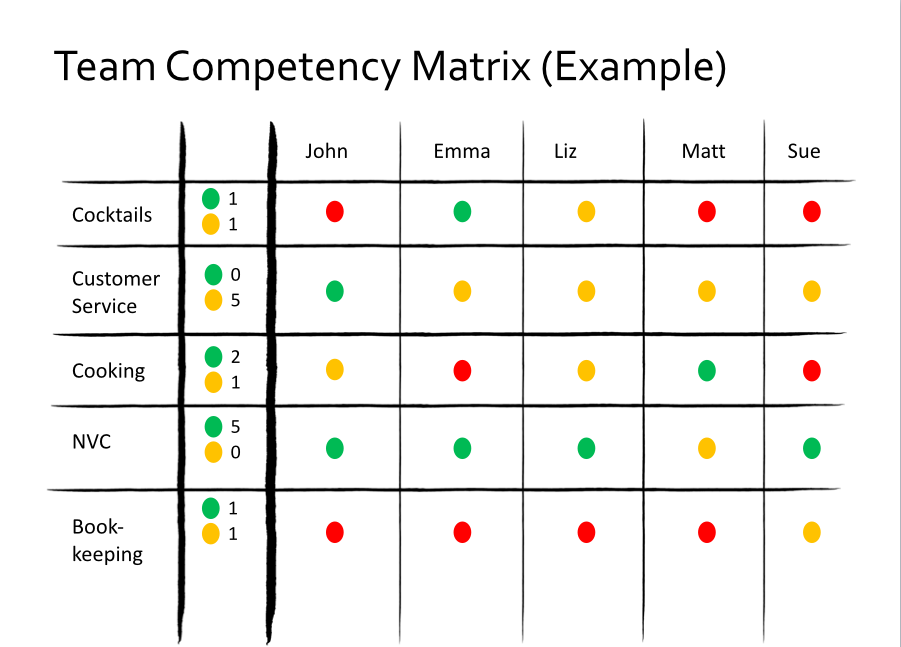Robust Theme
Dec 09, 2019 2020-04-08 7:40Robust Theme
10 Tips for Someone New to Agile and Scrum

Are you new to Agile or Scrum?
By: Kumar Dattatreyan
It can be hard to know where to start when you're new to agile and Scrum. There is a lot of information out there, but it's difficult to know what is important and what isn't. This blog post will provide 10 tips for someone new to Agile and Scrum which will help you maximize your success!
Learn the Basics
Agile and Scrum are based on the principles and values of the Agile Manifesto. It is extremely important to understand how to apply them in order to successfully implement them using Scrum or some other Agile Framework.
Get Certified
One of the best and quickest ways for someone new to agile, scrum, and project management as a whole to learn is by obtaining a certification from one of the more established certification bodies. While we don't prefer one over another, we've seen good results with ICAgile's Agile Fundamentals course since it's agnostic to the frameworks and focuses more on providing a broad and deep introduction to Agile rather than a focus on any one framework.
Our on-demand introduction to Agile And Scrum is an excellent way to learn the basics and you have the added benefit of a coach to guide you along the way.
Understand the Frameworks
Agile frameworks provide a structure for agile teams to work within. While there are many different frameworks, the Scrum framework is the most popular one and is based on a few simple principles.
Kanban is another popular framework that can be used in combination with Scrum or as a standalone framework.
While these frameworks are the most popular, it's important to understand the differences and similarities of each and when to use what to support your personal, as well as your team's growth and maturation. Look to this space as we deep dive into some of the nuances, and subscribe to our YouTube channel for short videos on topics of interest to you.
Visit the Library
Books about Agile are a great way to learn about Agile. Agile Manifesto co-author, Jeff Sutherland has written several good books including Scrum: The Art of Doing Twice the Work in Half the Time and Lyssa Adkins Coaching Agile Teams which provide valuable insight into not only how agile works but also the reasons behind why it works. Lyssa Adkins's book, in particular, is an excellent reference for building good Scrum Master and coaching skills. These are just two options, and there are many more great books on the topic of agile that you will find useful as you continue on your journey.
Network with your Peers
Agile conferences are a great way to learn about Agile and network with other professionals in the field. The Agile Alliance conference is one of the larger Agile-focused conferences, but there are many smaller regional ones that might be more applicable to you. Visit your local Meetup groups to gain insights in a more intimate and friendly setting, or look for opportunities in your workplace. Chances are, if you're practicing agile at work, you may be able to take advantage of communities of practice hosted by your employer.
In addition, we host several smaller member communities and agile events that allow you to network with like-minded people in similar career paths. Connect with us to learn more!
Use Failure as a Catalyst for Learning
Agile is all about learning and improving. The Agile mindset and Agile Values encourage you to try new things, share ideas with your team members, ask for help when needed and embrace failure as a step along the way of growth.
We hate having to fail just like everyone else does but it's important that we learn from our mistakes so they don't happen again. The Agile And Scrum Methodology provides a framework for continuous improvement and we think it helps people to "fail fast", that is, if you're going to fail, then it's better the failure is small and easy to learn from.
Be Proactive
Being proactive is an important part of the Agile mindset. The Agile Manifesto encourages us to value responding to changes over following a static plan, not only because it allows us to be more flexible but also because it helps improve communication within an agile team. Agile thrives on collaboration and feedback from both your peers as well as those who you work with outside of the Agile community.
Get your hands dirty
One of our favorite sayings at Agile Meridian is "If you're embarrassed by what you build, then you waited too long before sharing". Agile is all about constant improvement and sharing your ideas, thoughts, and experiences and is one of the best ways to learn. Agile encourages you to put yourself out there by speaking at conferences or events as well as blogging on sites like this one!
Don't give up
It takes time to master Agile so don't be discouraged if your first Agile project isn't a complete success. In many cases, Agile is implemented on existing projects that have been ongoing for years and Agile is just one of the ways to improve the process which means you will likely need to start small. Don't lose sight of why we're doing Agile in the first place. Agile ways of working allow us to get closer to our customers, increasing our chance for success because it helps us improve the quality of our products and services while helping us to respond to change. Agile is not a silver bullet, but when implemented properly, it can have a significant impact on an organization. It's important to remember this as you work through your first Agile project and beyond.
Transparency is key

One of the Agile and Scrum values is transparency which is essential for effective communication. In order for agile teams to be successful, they need to be able to share information freely with one another. This includes everything from what you're working on and how it's going, to any blockers or impediments that you're experiencing.
Be Patient
Agile is not a quick fix, it's a journey. It takes time to learn and implement Agile properly so be patient with yourself and your team. There are no silver bullets in Agile, but there are many ways to improve over time by embracing the Agile mindset.
Be Courageous
Agile requires courage to try new things, be open about your ideas and concerns, learn from others in Agile communities like ours or others that you find or join online. Most importantly, it's paramount that you raise issues and concerns with your leadership team. Agile thrives on feedback from all levels of an organization and one of the most important components in Agile is having open conversations with your team members, peers, and leadership throughout the Agile journey to help make it a success for everyone involved.
Be Collaborative
Collaboration is one of the Agile Manifesto's guiding principles and it begins with you! A key aspect of transparency is how quickly you're able to raise issues, impediments, or challenges with others on the agile team. This requires a heightened level of collaboration that is essential to the success of Agile.
Push for incremental growth
What is incremental growth? How will you know it? Incremental growth is the Agile way of life. It's a philosophy that helps us focus on getting better every day, making small but valuable changes to our products and services so that we can continue to improve over time.
Embrace change
The Agile Manifesto tells us that we "Respond to Change over Following a Plan" because Agile is all about embracing change. This doesn't mean that you don't have a plan, it means that your plans should be flexible and adapt to changes as they occur.
Adopt a Kaizen Mindset
The Kaizen mindset is all about small but meaningful changes that help us to improve our products and services over time. How can you encourage your team or yourself to adopt this mindset? We think it's by providing the environment that allows for trust within your team. The more your team members trust one another, the more likely they will be transparent, open, and courageous and will look for small improvements to benefit the team and the product they build. Good Scrum Masters embrace Kaizen and help their teams look for ways to continuously improve.
Document your progress

One of the best ways to track your progress and ensure that you're on the right path is to document what you've done, are doing, and plan to do. This isn't just the work you do in your role as a Scrum Master, Product Owner, or Team Member. This is YOU and your goals. What are your personal goals? How will you know if you're making progress? What small changes are you making to enhance your knowledge of Scrum and Agile, to the products and services that you are responsible for? How will these incremental improvements impact your career growth?
One of the best ways we know of is to keep both long-term and short team goals visible. Use Agile to be Agile! Maintain a Personal Kanban board to visualize your goals and write user stories to document the work you're doing to deliver on them. Doing this will not only benefit your own growth but will also allow you to gain insights into how these tools and techniques will benefit your team. Give it a try!
Organize your Agile team

The Agile Manifesto Value, "People over Process" can guide us on how to effectively organize our teams. It's important to have the right people in the right roles so that they can be successful and productive. How many members should your team have? What are the ideal roles for each member?
One way to answer these questions is by using a Team Competency Matrix to help you visualize how each Agile team member contributes to the team, and what skills they may lack and learn from someone else. We use this technique in many of our classes, including our Agile Team Facilitation class and our Leading with Agility course.

From Management 3.0 - Team Competency Matrix
Another great technique is to conduct an Agile Team Charter. In this workshop, you will facilitate (we show you how in our Facilitation Masterclass) a kickoff for your team where they may go through the Team Competency Matrix, and other techniques to build a charter for how they will self-organize into the cross-functional team they will become. It's a wonderful exercise and one no team should ever skip. Self-organization is one of the hallmarks of a great agile team and making this one of the first things a team does is extremely beneficial to you and your team.
A Traditional Project Manager role may not apply (although an Agile Project Manager will) here as what we're trying to do is to build a resilient and self-sufficient team, one that will grow into a high-performing team over time. Using your new-found agile skills, either as a team member, or one of the leadership roles (Scrum Master or Product Owner), you will hone your skills and experience with the agile practices and help your team grow.
Roles over Tools
Agile and Scrum teams can work with or without Agile tools, so don't worry too much about the tools you will use. The best way to build a foundation is by mastering your role as either a Product Owner (the voice of the customer), Team Member (who builds the product), or the Scrum Master (coach for the team).
Agile is a mindset and set of values, not just another way to manage your projects. While tools are important, it's more important to establish the human side of things first. Having said that, in today's distributed world, it's good to have some basics in place.
The Product Backlog
The most important artifact in Agile, the Product Backlog is the "living" document that contains all the features and functionality of a product. It's essentially a prioritized list of everything that will be delivered to stakeholders, whether it be customers or internal business users. The Product Owner is responsible for maintaining this list and ensuring that it is always up-to-date. This isn't the only artifact of course as there's the Sprint Backlog, someplace for User Stories, etc., however, we will focus on just the Project Backlog for the purpose of this topic.
In terms of tooling, it's good to have a simple and easily accessible place to store the backlog so that the whole team has access to it. One of the easiest and most accessible tools on the market today is a simple Spreadsheet housed in Microsoft online or Google docs. Artifacts like the backlog are easily shared and maintained by multiple people at the same time.
While this isn't a permanent solution, it's certainly a start while you research the tooling that will support your growth moving forward. Tools such as Jira or Kanbanize (our favorite - since it allows for both Scrum and Kanban) are fantastic, but first, establish what you need, model it using simple tools like digital whiteboards (Miro, Mural, Teams Whiteboard, Jamboard) to help visualize what you need on a virtual Scrum Board.
Don't beat the team over the head with an Agile Rule Book
Most importantly, as you gain knowledge and confidence in your skills as a Scrum Master, Product Owner, or Team Coach, know that changing how people work is a journey, not a sprint, and your role should be focused on supporting others in this journey, no matter your role. We often say at Agile Meridian that "Leadership begins with Influence".
Agile teams should be self-managing, meaning it's up to the team on how best they want to work together in order to get their job done. While you may offer input on practices such as Continuous Integration or Test Driven development practices, a good Scrum Master takes the team's input and helps them, mentors them, and coaches them. Teams grow from this type of care and feeding.
Agile and Scrum teams will always benefit from a coach in the room, but don't assume you know how best to do things.
Focus on what is important; allow your team to learn and grow at their own pace while keeping them motivated by doing whatever it takes to help reduce impediments that may affect the flow
Value Feedback

The best way to learn and grow is by constantly being in a feedback loop. Agile teams are encouraged to give and receive feedback at all times, whether it's during the daily stand-up or review meeting, or through more formal methods such as 360 reviews.
Make sure you're always asking for feedback from those around you; we have a free feedback course so you can immediately improve in that area should you wish to. Just sign up here. We also teach how to give and receive feedback in most of our courses as we believe it's such an important yet overlooked skill in the workplace.
Our advice; go rock your feedback skills and reap the rewards of a more engaged individual, team, and organization!
Increase awareness and promote understanding of Agile in your organization

One of the most important things you can do when starting out in Agile is to increase awareness and promote understanding. Agile is a mindset, not just a methodology or process framework, so it's up to everyone in your organization from senior leadership on down to embrace this way of working together. We think of leadership as influence, and we can think of no better way of showing your leadership skills than by influencing those around you to embrace this mindset.
We have a great self-paced course on leadership to help you on your journey. You can combine it with a coaching package so that you will have feedback along your leadership journey.
In Conclusion
Our mission is to help Agile teams around the world get better at what they do by providing tools, training, and coaching. We hope this article and the links provided in it will lead you to an understanding of what we think are important steps in self-discovery and learning.
We would love to hear from you, so please feel free to reach out and let us know how we can help.
Thank you for reading!
- Agile Meridian Team -
Don't forget to sign up for our newsletter and our YouTube channel so you don't miss any of our upcoming posts on agile tips, upcoming offers, and events.

